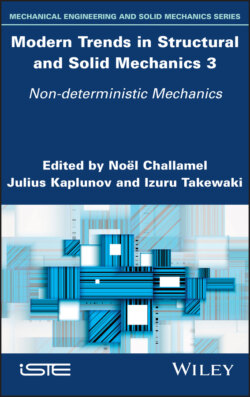Читать книгу Modern Trends in Structural and Solid Mechanics 3 - Группа авторов - Страница 15
1.2. Mitochondria
ОглавлениеOur brief overview is about the very exciting area of the intense biological research of the mitochondria, an intracellular organelle. The mitochondria’s primary functions include the maintenance of energy homeostasis, cell integrity and survival (Simcox and Reeve 2016). The mitochondria variably comprise between about 20% of the cell, up to most of the cell volume, dynamically depending on the energetic needs of the cell. In the aggregate, mitochondria account for about 10% of body weight, attesting to their importance. These organelles produce up to 95% of a eukaryotic cell’s energy through oxidative phosphorylation (Tzameli 2012), driven by an electrochemical proton gradient created by the respiratory chain housed within the mitochondria’s inner membrane. Oxidative phosphorylation is the metabolic pathway in the mitochondrial matrix containing the cristae, where enzymes oxidize nutrients. Energy is released, producing adenosine triphosphate (ATP), a complex organic chemical that provides energy for many cellular processes. The human body consumes, on average, a quantity of ATP per day that approximates its body weight (Zick and Reichert 2011).
Eukaryotes are organisms with cells that have a nucleus enclosed within membranes, unlike prokaryotes (bacteria and archaea). Eukaryotes may also be multicellular and consist of many cell types.
The cristae are tight folds of the inner membrane studded with proteins, with the folds providing a significant increase in surface area (much in the same way as the folded cerebral cortex), over which the above energy-producing processes can occur. Cristae biogenesis, regulated through the large enzyme ATP synthase, closely links mitochondrial morphology to energy demand (Simcox and Reeve 2016).
Mitochondrial functions also include quality control through fission (division) and fusion (merging), iron–sulfur cluster formation, calcium handling, cell signaling, cell repair and maintenance, and reactive oxygen species (ROS) production (Simcox and Reeve 2016). ROS emission is harmful to the mitochondrial DNA, which is a byproduct of energy production (Kembro et al. 2013) and is at least partially eliminated. As part of their metabolic functions, mitochondria also perform critical programmed cell death functions called apoptosis (Vakifahmetoglu-Norberg et al. 2017), which are related to the function of fission. Figure 1.1 summarizes some of these functions.
Figure 1.1. Mitochondria shown undergoing fission/fusion. The respiratory complexes are shown, identified using roman numerals. Various mechanisms are also shown, including signaling, Ca2+ transport across the membrane, and others outside of our current scope (Vakifahmetoglu-Norberg et al. 2017, with permission). For a color version of this figure, see www.iste.co.uk/challamel/mechanics3.zip
Mitochondria are believed to be the reason why complex cellular beings evolved from single celled entities. They originated as individual cell bacteria, but eventually integrated with our ancestral cells, leading to the current eukaryotic cells with nuclei. This ancestry partially explains why mitochondria, to this day, contain mtDNA, remnants of their own DNA.
The goal of this chapter is to refer to aspects of mitochondrial behavior that appear to be governed by optimization principles, which are constrained by biological limitations. It is reasonable to assume that the mathematical machinery of optimization can be useful in modeling some of these processes. Also, given that there are numerous mechanistic determinants of cell and intracellular functioning, we believe that these can be modeled using some of the principles of mechanics that govern engineered systems, as well as the frequently observed feedback and feedforward mechanisms that coordinate the multitude of processes within cells. Of course, biological systems are significantly more complex and require considerably more experimentation in order to ascertain behavior. We suggest the ideas herein with humility. A more detailed review of some of these ideas is available (Benaroya 2020), where the links between mitochondria, cellular energy production and the coupling of these to diseases and the body’s response to injury are discussed.
